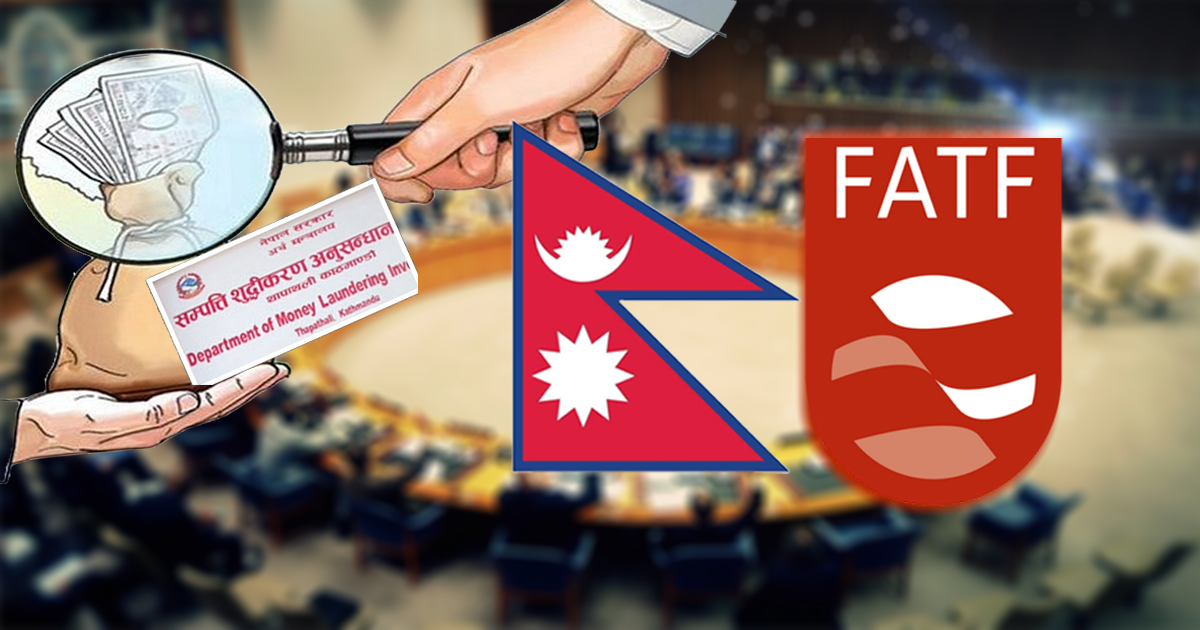Kathmandu: Nepal has formally initiated efforts to exit the grey list of the Financial Action Task Force (FATF), the international body that monitors money laundering and financing of terrorist activities.
Nepal was placed on the FATF grey list in February for failing to comply with international practices related to anti–money laundering. Following that, Nepal has been working according to an action plan for removal, and in today’s plenary session of the Asia Pacific Group (APG) held in Tokyo, it presented progress on the implementation of the plan.
A Nepali delegation led by Phanindra Gautam, Secretary at the Office of the Prime Minister and Council of Ministers, is currently in Japan. At APG’s annual meeting and technical assistance meeting in Tokyo, Nepal presented progress made under its quarterly action plan. The team includes Gautam, Nepal Rastra Bank Deputy Governor Dr Neelam Dhungana Timsina, among others.
After the Tokyo meeting, the Nepali delegation will head to Macau for a face-to-face session.
A source at the Office of the Prime Minister and Council of Ministers told Clickmandu, “Since being placed on the grey list, we have already prepared and begun implementing an action plan to exit. Accordingly, we are now presenting our progress in Tokyo and Macau.”
The government has implemented multidimensional reforms and legal frameworks with the aim of quickly taking the country off the grey list. Nepal has informed FATF’s APG that it has recently improved investigations and prosecutions related to money laundering and terrorist financing.
The government has enforced more than 19 different laws and regulations, including the Anti–Money Laundering Act, and established guidelines and coordination mechanisms to meet APG’s directives for exiting the grey list.
Directives have been issued targeting high-risk sectors such as precious metals and commodities, casino businesses, and real estate transactions. These measures strengthen systems for identifying, reporting, monitoring, and exchanging information on suspicious transactions.
The government has already prepared and implemented a financial investment strategy and action plan (2024/25 to 2028/29) and approved detailed corrective measures aimed at exiting the grey list. It has also committed to implementing all reforms impartially, transparently, and on time, with confidence that Nepal will exit the grey list within the stipulated timeframe.
Similarly, directives issued to casinos and real estate businesses regarding anti–money laundering and counter-terrorist financing are now implemented. A directive committee and a coordination committee have been formed as mandated by law, along with four implementation mechanisms to ensure organizational structure. These mechanisms coordinate, facilitate, monitor, direct, and prepare national and international progress reports.
The government has also established a think tank, including experts, to harmonize monetary and financial policies. It is working to formulate a federal economic policy to guide the activities of federal, provincial, and local governments, expected to be completed by Chaitra 2082 (mid-April 2026). A plan to gradually formalize the informal sector is also underway.
Nepal was added to FATF’s grey list on 21 February 2025 due to weaknesses pointed out by the APG, especially in investigations and prosecutions of financial crimes. At that time, Laos was also listed, while the Philippines was removed.
Although the international community welcomed Nepal’s legal reforms, it noted delays in implementation and weaknesses in investigation and prosecution. FATF’s Paris plenary in February raised concerns that Nepal had failed to meet even minimum international standards for financial crime control, though some legal improvements were acknowledged.
APG’s mutual evaluation report two years ago identified 40 areas for reform, including stronger regulation of non-financial sectors, better tracking of terrorist financing, improved investigation and prosecution of money laundering cases, and better implementation of existing laws.
The FATF grey list increases the risk of foreign aid, investment cuts, and international scrutiny, while the blacklist isolates countries from the global financial system.
The FATF grey list increases the risk of foreign aid, investment cuts, and international scrutiny, while the blacklist isolates countries from the global financial system.
Nepal had faced grey list risk in 2009 as well, but avoided it through diplomatic efforts and commitments to reform.
To exit the list, Nepal has committed to seven key improvements: 1) Enhance understanding of money laundering and terrorist financing risks, 2) Improve risk-based regulation in commercial banks, high-risk cooperatives, casinos, precious metals and gems businesses, and real estate, 3) Identify and take action against illegal payment service providers and hundi operators without undermining financial inclusion, 4) Strengthen capacity and coordination of investigative bodies, 5) Increase the number of money laundering investigations and prosecutions, 6) Improve asset identification, freezing, and confiscation mechanisms, and 7) Address technical shortcomings in targeted financial sanctions for terrorist financing and proliferation financing.
A PMO source remarked, “We have a clear roadmap for the given two years. By regulating cooperatives, casinos, and precious metals businesses, and by enforcing existing laws with digital transactions, Nepal can exit the grey list.”
However, the source also admitted that the prosecution of money laundering cases remains a pressing challenge.
Nepal has pledged continued cooperation with FATF, ensuring effective reforms so that the country exits the grey list soon and avoids similar risks in the future.



Comment Here